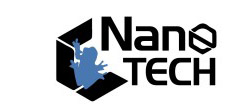TECNOLOGÍAS BASADAS EN MATERIALES HÍBRIDOS AVANZADOS: GRAFENO, MATERIALES 2D Y AISLANTES TOPOLÓGICOS
El reciente descubrimiento de los materiales bidimensionales, tales como el grafeno y otros materiales 2D (nitruro de boro hexagonal (h-BN), disulfuro de tungsteno (WS2), …), ha supuesto un hito en la fabricacion de nanoestructuras con innovadoras capacidades y aplicaciones tecnológicas siendo ademas una revolución en el campo de la nanoelectronica y la física de la materia condensada. Entre los materiales más prometedores, junto con el grafeno y los materiales 2D se situan los conocidos como aislantes topológicos. Todos ellos, aumentan enormemente su potenciabilidad cuando se combinan para fabricar heteroestructuras híbridas que aprovechan sus diferentes capacidades para fabricar materiales a la carta con aplicaciones tecnológicas concretas. Entre ellas, en este proyecto queremos abordar la fabricación de sensores y emisores en el rango de los THz con heteroestructuras multicapas de grafeno y h-BN que extenderemos después a otros materiales 2D y aislantes topológicos.
Tanto el grafeno como los aislantes topológicos presentan extraordinarias capacidades para la fabricación de dispositivos espintrónicos de gran interés tecnológico. Por un lado el grafeno posee una elevada longitud de difusión de espin y los aislantes topológicos poseen además una fuerte interacción espín-órbita que permite la formación espontanea de estados de borde helicoidales con espín definido y espacialmente separados, lo que representa el conocido como Efecto Hall Cuántico de Espín (QSHE). Utilizaremos diferentes tipos de aislantes topológicos tales como InAs/GaSb, InAs/GaInSBb y (Bi1–xSbx)2Te3. Caracterizaremos sus propiedades de transporte electrónico y de espín, así como sus prestaciones como detectores y emisores sintonizables de THz a bajos campos magnéticos.
Por otro lado, para ciertas aplicaciones la obtención a gran escala de grafeno mediante métodos químicos puede ser la más adecuada tanto por la posibilidad de modular sus propiedades como por la enorme reducción del coste de producción. Nuestro grupo ha demostrado una gran capacidad para la síntesis de materiales derivados de grafeno y óxido de grafeno mediante el diseño de nuevas rutas químicas. Con este tipo de grafeno abordaremos la preparación de materiales híbridos para la captura de CO2 y como sensores de gases ultrasensibles. En la fabricación de estos dispositivos contaremos también con la colaboración del Departamento de Materiales Avanzados de Carbono del Grupo Antolín Ingeniería (Burgos), la empresa Graphenea y con la empresa ABATEMENT & VACUUM.
TECHNOLOGIES BASED ON ADVANCED HYBRID MATERIALS: GRAFEN, 2D MATERIALS AND TOPOLOGICAL INSULATORS
The recent discovery of 2-dimensional materials such as graphene and hexaboron nitride (hBN) or molybdenum disulfide (MoS2) has boosted the fabrication of nano-structures with novel applications and capabilities and represent a breakthrough in the field of nano-electronics and condensed matter physics. Among the most promising materials, aside to graphene and hBN, lie the so-called topological insulators. These materials, when combined to generate hybrid structures, can exploit fully their exceptional properties paving the way for the generation of bespoken materials with unique technological applications. Amid all these applications, in this project we aim to fabricate emitters and sensors that will lie in the THz range based on multilayer heterostructures of graphene, hbn that will be thoroughly extended to other 2d-materials and topological insulators
Graphene and topological insulators present extraordinary characteristics that can be used for the generation of spintronic devices on the forefront of technology these days. Graphene possesses a long spin diffusion length while topological insulators take advantage of their high spin-orbit coupling that can be exploited to generate spontaneously helicoidal edge states where spin is well-defined and spatially separated, the so-called quantum spin Hall effect (QSHE). We will investigate several topological insulators such as InAs/GaSb, InAs/GaInSBb and (Bi1–xSbx)2Te3 and we will characterize their electronic and spin properties as well as their performance as tunable emitter/detector in the THz at low magnetic fields.
Finally, we will explore the use of scalable graphene obtained by chemical methods which would represent an enormous advantage in terms of costing and because of its well-known tunability. Our group has shown a great capacity in the synthesis of materials derived from graphene and graphene oxide designing novel chemical reactions. We will explore the generation of hybrid materials using this chemical graphene as the precursor for CO2 trapping purposes and as well as for gas detectors. During the fabrication of these devices we will closely collaborate with the Departamento de Materiales Avanzados de Carbono from Grupo Antolín Ingeniería (Burgos) as well as with Graphenea and ABATEMENT & VACUUM.


